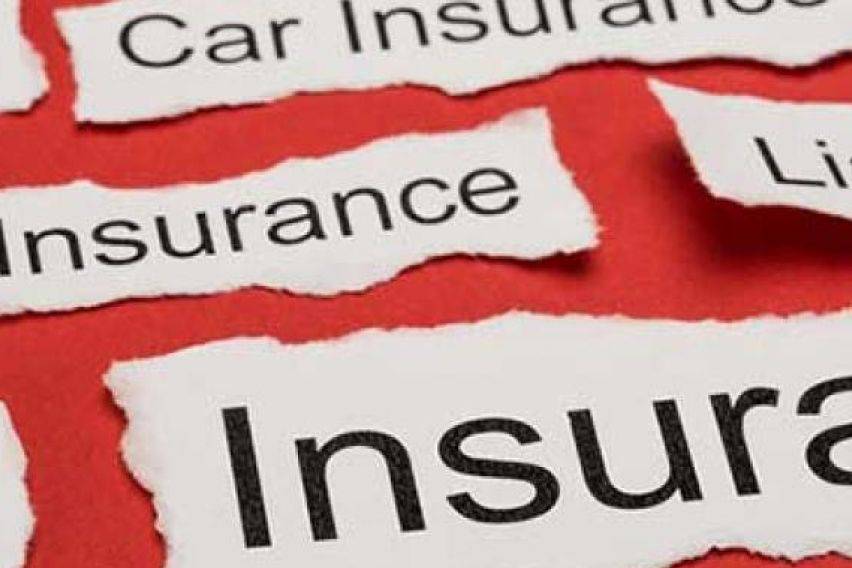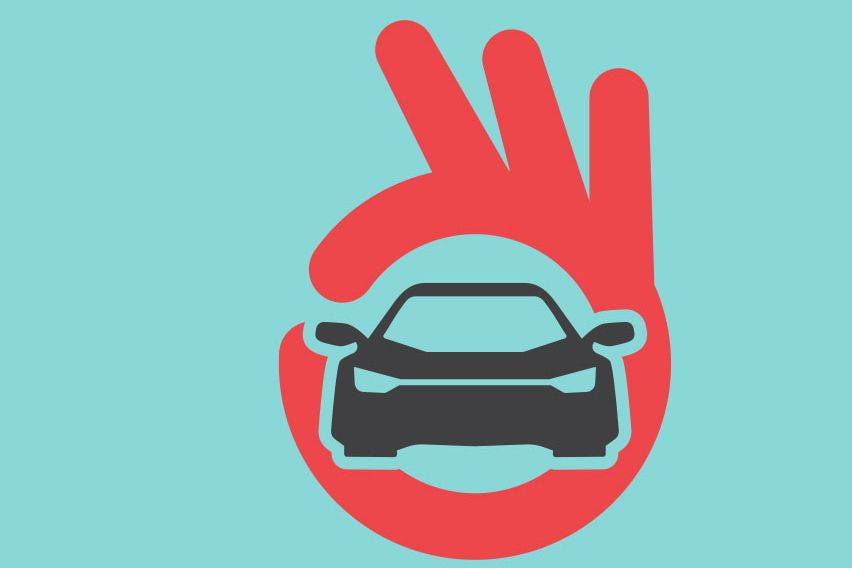Important insurance terms a car buyer should know

- KEY TAKEAWAYS
- Basic terms
- Policyholder
- Policy Tenure
- Premium
- Claim
- Endorsement
- Exclusions
- Grace Period
- Type of Insurance
- Third-Party Liability (TPL) Insurance
- Personal Accident Insurance
- Acts of Nature Coverage
- Other important but lesser know terms -
- Insured Declared Value (IDV)
- Underwriting
- Reinstatement
- Roadside Assistance
- Subrogation
- Salvage Value
For most, buying a car is an exciting milestone, however, the four-wheeled possession comes with its own set of responsibilities, like securing finances and the right insurance. It therefore becomes crucial for a car buyer to understand basic terminology associated with car insurance and finance. This information will help car buyers in the Philippines to make informed decisions and ensure adequate coverage.
KEY TAKEAWAYS
What documents do I need to get my car insurance in the Philippines?
To secure car insurance in the Philippines, following documents are required: driver's license, original Receipt (OR) and certificate of registration (CR), deed of sale (in case of a used car), previous vehicle insurance policy (if any), any valid identity proof other than the driving license, and photos of the vehicle.What are the different types of car insurance policies available in the Philippines?
Auto insurance is a bit complex as companies have a lot to offer to a Filipino driver. He/she can choose among the following car insurance policies - Compulsory Third-Party Liability, Comprehensive Car Insurance, Personal Injury Protection, Collision Insurance, and Medical Payments Coverage.What factors influence car insurance premiums?
Several factors influence a car’s insurance premium, including engine type, coverage, used/new car, car location, client’s credit history, claim frequency, and more.Why should I get my car insured?
Car insurance can help you save money. Yes, it’ll take care of all the financial liabilities like medical bills and repairs, when your vehicle is involved in an accident. It is also a legal mandate that every registered car in the Philippines must adhere to.Save Up to 60% on Car Insurance Renewal
- CASA Coverage Up To 10 Years Old
- Free Roadside Assistance
- Free Acts of God/Acts of Nature
 T&C
T&C
In our previous article, we have already discussed important terms related to car finance, and now it is time to explore essential insurance terms every car buyer in the Philippines should know.
Starting with basic insurance terminology and then moving to types of car insurance and other not-so-known but important terms.
Basic terms
Policyholder
Definition: A policyholder is an individual or entity who owns the insurance policy, in this case, auto insurance.
Why it’s important: As the policyholder, you have certain rights and responsibilities which are clearly outlined in the policy. It includes paying premiums, filing claims, and ensuring that the policy details are accurate. It’s therefore crucial to keep your contact information up to date and review your policy regularly to ensure it meets your needs and you also don’t miss out on any payment.
Example: If you purchase a car insurance plan to provide coverage from several accidents, theft, acts of god etc, you’ll be called the policyholder.
Policy Tenure
Definition: Policy tenure is the duration for which an insurance policy is valid.
Why it’s important: Knowing the policy tenure helps in timely renewals and continuous coverage. Most car insurance policies in the Philippines have a one-year tenure, requiring annual renewal. Planning for policy renewals ensures your car is always covered and it also allows the policyholder to reassess his/her insurance needs annually.
Example: If you purchase a car insurance plan to provide coverage for 40 years, the policy term will be 40 years.
Premium
Definition: The premium is the amount a policyholder pays to the insurance company for coverage the policy offers over a specific period.
Why it’s important: Several factors influence the premiums such as the type of coverage, the car's make and model, the driver's profile, and the deductible chosen. Once you know how a premium is calculated, you can easily select a policy that fits your budget.
Example: Drivers with no history of claims might enjoy lower premiums compared to high-risk drivers (premium & driver’s profile)

Claim
Definition: A claim is a formal request made by the policyholder to the insurance company. It is when the policyholder asks for compensation or coverage of losses that occurred under the policy terms.
Why it’s important: Knowing the insurance claim process and documentation is important for smooth and timely settlement of the policy. Understanding your insurance claim procedures can prevent delays. Further it is important to know the timeline for filing a claim, required documents, estimates and approvals for the repair.
Example: Depending on the situation, the claim amount could cover damages to your car, the cost of treating injuries, theft, and other related expenses.
Endorsement
Definition: An endorsement is an amendment or addition to the existing insurance policy which alters its terms or coverage.
Why it’s important: Endorsements allow policyholders to revise their existing insurance coverage as per the changing needs. Keeping your policy updated with endorsements ensures that you have the coverage you need.
Example: Adding a new driver, covering additional accessories like a high-end sound system, or increasing coverage limits can be done through endorsements.
Exclusions
Definition: Exclusions are specific situations or conditions that are not covered under the insurance policy.
Why it’s important: One should know exclusions in the policy as it will prevent any kind of surprises during a claim. Common exclusions include driving under the influence, using the vehicle for commercial purposes without proper coverage, and damage due to illegal activities. Knowing these exclusions helps a driver avoid actions that are not covered under the policy, further, it also ensures that the policyholder gets necessary endorsements when needed.
Example: Wear and tear, vehicle modification, negligent driving, driving under the influence, etc.
Grace Period
Definition: A grace period is an additional time allowed after the due date for the payment of the premium, in this period the policy remains active and the coverage continues.
Why it’s important: Understanding the grace period helps avoid policy lapses due to missed payments, thus ensuring continuous coverage and protection.
Example: If your premium is due on June 1 and your policy offers a 30-day grace period, you have until June 30 to make the payment otherwise, you’ll end up losing coverage.
Also Read: Exploring essential add-ons for car insurance in the Philippines
Type of Insurance
Comprehensive Insurance
Definition: Comprehensive insurance is an extensive coverage plan that offers protection against a wide range of incidents, including theft, vandalism, natural disasters, and accidents.
Why it’s important: Comprehensive insurance provides peace of mind to a car owner by covering various risks that could lead to significant financial loss. It ensures that the car owner is protected not just from road accidents but also from unforeseen events like natural calamities, which are common in the Philippines.
Example: Say your car gets damaged in a typhoon, comprehensive insurance would cover the repair costs, saving you from a substantial financial burden.
Third-Party Liability (TPL) Insurance
Definition: TPL insurance is mandatory in the Philippines and covers the policyholder's legal liability for damages caused to third parties, including bodily injuries.
Why it’s important: TPL insurance is mandatory in the Philippines for all vehicle owners. It ensures that if you cause an accident resulting in injury or damage to another person, the insurance will cover the costs, protecting you from legal and financial burdens.
Example: If you accidentally hit a pedestrian or another vehicle on the road, TPL insurance will cover medical expenses and repair costs.

Personal Accident Insurance
Definition: Personal accident insurance provides coverage against injuries or death sustained by the driver and passengers of the insured vehicle.
Why it’s important: It ensures that medical expenses or compensation for accidental death are covered. It offers financial protection to the insured and their family members in case of severe accidents.
Example: In the event of a major accident, personal accident insurance will cover hospital bills, surgical expenses, and even rehabilitation costs.
Acts of Nature Coverage
Definition: Acts of God coverage offers protection against damages caused by natural disasters such as floods, earthquakes, typhoons, and other catastrophic events.
Why it’s important: Given the frequency of natural disasters in the Philippines, Act of Nature coverage is crucial for protecting your vehicle from damage caused by the forces of nature.
Example: During heavy flooding, your car may suffer extensive water damage. Without an act of nature coverage by your side, you would not have to pay for repairs out of pocket.
Also Read: Must-have car insurance policies for Philippine drivers
Other important but lesser know terms -
Insured Declared Value (IDV)
Definition: Insured Declared Value is the maximum amount the insurer will have to pay in case of total loss or theft of the insured vehicle.
Why it’s important: The IDV is a crucial factor in determining the premium and the compensation amount in the event of total loss of the vehicle. Usually, it reflects the current market value of the car, thus ensuring adequate coverage without overpaying premiums.
Example: If your car is valued at PHP 800,000, the IDV is usually close to this amount, thus ensuring the car owner is fully compensated in case of theft or irreversible damage.
Underwriting
Definition: The process by which the insurance company evaluates the risk of insuring a vehicle along with premium and terms of coverage is called underwriting.
Why it’s important: Understanding the underwriting process helps you understand why certain factors affect your car insurance premium and coverage options. It allows for better negotiation and selection of policies which in itself is very important.
Example: Factors like your driving history, car model, and usage patterns influence underwriting.
Reinstatement
Definition: The process of restoring a lapsed insurance policy by paying the overdue premium and any penalties known as reinstatement.
Why it’s important: Understanding reinstatement procedures ensures that a policyholder can restore coverage quickly in case the policy lapses, thus avoiding gaps in protection. The time frame and conditions for reinstatement help ensure continuous coverage without significant penalties.
Roadside Assistance
Definition: Roadside assistance is an add-on service by the insurance company. It provides help in case of insured vehicle breakdowns, including towing, battery jump-starts, flat tyre changes, and emergency fuel delivery.
Why it’s important: Roadside assistance offers peace of mind and ensures zero inconvenience during an emergency.
Example: Imagine your car breaks down on a deserted road at night, you can easily call roadside assistance for timely support.
Subrogation
Definition: After paying a claim, when an insurance company seeks reimbursement from the party at fault or their insurer is called subrogation.
Why it’s important: Knowing about subrogation helps a policyholder understand the rights and processes involved after an accident, especially when another party is at fault.
Example: It can be the medical bill which your insurance provider paid following an accident that was caused due to someone else's fault. Legally, the company can ask the money back from the party at fault.
Salvage Value
Definition: The salvage value of a vehicle is the estimated resale value after it has been declared a total loss by the insurer.
Why it’s important: Salvage value is crucial for understanding the compensation a policyholder will receive after a total loss. The insurer typically subtracts the salvage value from the total payout.
Example: If a car's IDV is PHP 500,000 and the salvage value is PHP 100,000, in this case, the policyholder will receive PHP 400,000 from the insurer when the insured car is declared as a total loss.
Bottom Line
Navigating the world of car insurance can be complex, however by understanding a few essential terms a car buyer in the Philippines can easily make an informed decision.
Also Read: How do car modifications affect insurance in the Philippines?
Featured Articles
- Latest
- Popular
Recommended Articles For You
Featured Cars
- Latest
- Upcoming
- Popular
Car Articles From Zigwheels
- News
- Article Feature
- Advisory Stories
- Road Test

